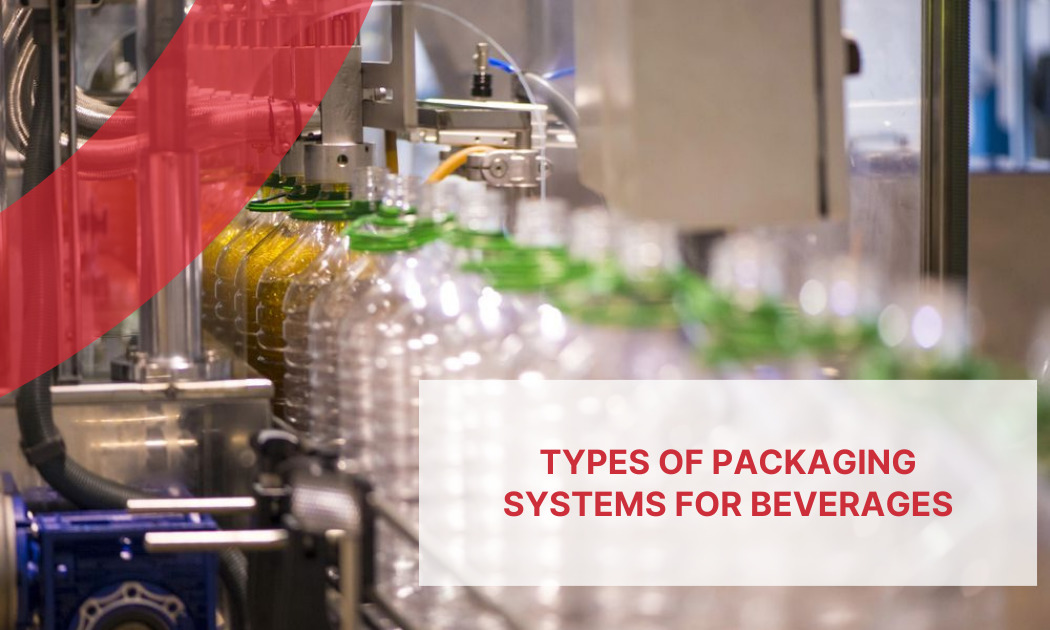Beverage packaging has specific requirements due to volume and content. Here, we detail the main types of packaging and systems.
Most Commonly Used Primary Beverage Packaging Materials
Beverages come in various types, and depending on their characteristics, certain packaging is used. While insulation is the main goal, in some cases, it’s equally important to ensure they are not exposed to sunlight. Therefore, due to the liquid’s texture and ecological concerns, different materials are available. Here are the primary options used in terms of materials:
- Cans
Cans are primarily used for soft drinks. Being opaque, they ensure good preservation of the beverage and don’t require cardboard boxes as secondary packaging, as plastic is often used instead. Cans offer portability and usually take up less space than a bottle. This option is relatively recent, alongside aluminum. - Bottle Packaging for Beverages
The bottle is one of the oldest types of packaging but remains prevalent. Glass continues to be the main choice for beverages like wine or cider. Conversely, plastic is often used for soft drinks. Nonetheless, the bottle remains an interesting option because it offers better preservation options than a can. - Cartons
Carton offers multiple possibilities but is most commonly used for juices and wine. Nowadays, it is usually biodegradable, minimizing the impact; this type of material can be processed in various ways. Although the Tetra Pak has been around for several decades, new options have become widespread. - Barrels
Finally, the barrel is a classic, originally made of wood, and despite time, it is still used on a small scale for beer and wine. Sometimes made of cardboard (bag-in-box), sometimes aluminum, it’s a solution for individual consumers. For professionals, the dimensions of these primary packages are larger.
Main Beverage Packaging Systems
We’ve discussed primary packaging, but now let’s talk about the system, which also includes secondary and tertiary packaging. Properly covering a bottle or can is pointless if there’s a risk of breakage afterward.
Ultimately, a packaging system is not just about storing the content but also covering, classifying, and securing it. The latter, securing the load, is most crucial for beverages. Not any type of packaging will do, hence knowing the different options to choose the most suitable for your needs is important.
Consequently, just like with food, there are different beverage packaging systems to overcome challenges. We can classify them from the least to the most beneficial for companies:
- Manual Packaging System
This type of system is becoming obsolete. It would involve directly filling from the vat or barrel. It can only be used in very small production lines, where each bottle has a very high added value. This might occur, for example, with some high-end wines that sell this as an added value, although increasingly less so.
Beyond artisanal scope, manual packaging has little way forward currently because it’s not competitive. It’s time-consuming and doesn’t result in a better outcome, hence it’s in decline.
- Semi-Automatic Packaging System
Semi-automatic packaging systems are designed for moving irregular loads, combining human action and machinery. This is especially important for bottles, whether plastic or glass. A good, responsive option is strapping machines. These machines can strap a load to prevent it from falling during transport.
While worker intervention is required, the advantage is achieving greater stability and load support thanks to the straps. Additionally, for small companies, it often serves as a good option if you have skilled workers who can perform the maneuvers because it costs less money. It’s noted that, as a small-scale solution, it usually works well; if you have a small budget and a specific, limited wrapping need, it will suffice.
However, a strapping machine cannot handle a high workload as effectively. It requires prior worker qualification. Also, the risk of workplace accidents is higher.
- Automatic Packaging System
An automatic packaging system is one where the worker does not have to intervene during the process. They simply need to turn the machine on and off via specific software. This will help you be more competitive against other companies.
For an automatic beverage packaging system, the best solution is the pallet wrapper. It covers and secures each pallet with transparent film, providing stability and protecting the load from dust and other impurities. Additionally, automatic coil change systems are incorporated, minimizing downtime. Moreover, the risk of workplace accidents is virtually eliminated. Finally, it reduces the need for labor by automating the process.
Various wrappers for beverages are available, depending on your company’s needs and the characteristics of the load. For example, the Saturn S8 model can wrap up to 160 pallets per hour, optimal for large productions or a high activity rhythm. An added advantage is that speeds can vary, although they are still much higher than with other systems.
The only downside to automatic beverage packaging systems is that they require an initial investment. And, although it may seem burdensome in the short term, the increase in productivity clearly compensates
for the expense.
Use Automatic Wrapping Machines
Beverage packaging is best done with wrapping machines, as they guarantee better results in less time and without incidents. At Movitec, we offer various models adapted to your company’s needs and all the guarantees of an international benchmark in the sector. Call us, and we will inform you!


